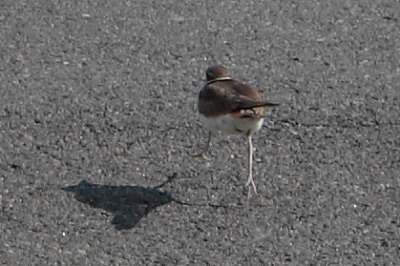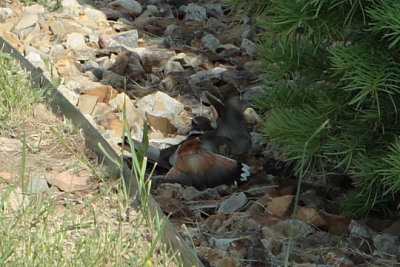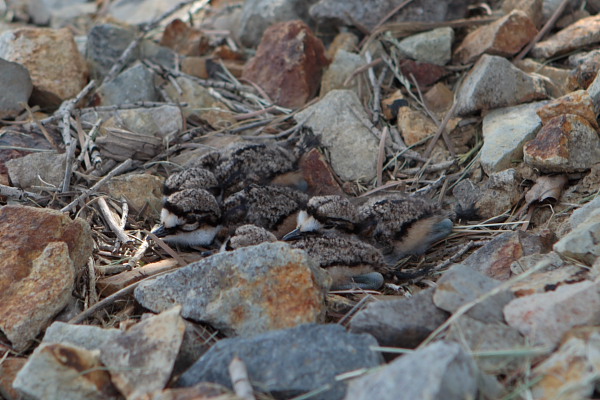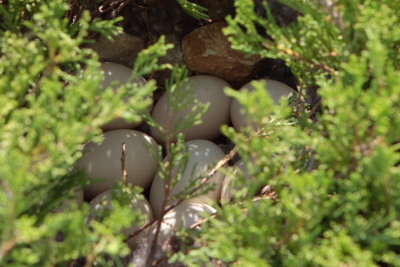In mid-June, on my way to buy groceries, I was walking across an empty parking lot and heard the distinctive sound of a killdeer.

As I approached, a pair of them starting going wild, which from experience, suggested the presence of a nest nearby. When I was a child, I discovered on a few occasions how aggressive killdeer parents can be if you end up too close to their nest, but was fortunate enough once to see a clutch of superbly-camouflaged killdeer eggs. On this day I simply continued on to the store, knowing that I probably would never locate the eggs, even if I wanted to.
After shopping, I headed home along the same route. As I began to descend a hill close to where I had seen the birds earlier, I saw a killdeer dart away from a bush below me. He or she started to make a lot of noise and feigning injury.

It is lucky she made such a racket, too. I was walking straight toward the nest, and without warning I may have inadvertently stepped on it. When I approached the bush she was near and the rock bed it was in, I took very cautious steps, just in case my suspicions were correct.
I was right to be careful, but I always assumed she was protecting eggs. It ended up that she was monitoring a nest of hatchlings, which, like the eggshells they had previously been encased in, had excellent camouflage.

Apparently, killdeer hatchlings are precocial, and so these chicks were naturally remaining silent and motionless when I was around. That in itself was interesting to see, but I also found myself wondering where the eggshells had gone. Did the parents move them away to decrease the likelihood of detection, did they move the chicks after hatching, or was it just the wind?
After looking at the chicks for a short period (I did not want to stay too long and create a greater disturbance than I already was), I continued toward home. About forty feet later, and now on a parking lot surface near a median with six inch tall bushes in it, I stopped to look back to remember the location of the nest. I stood there for possibly fifteen seconds when a bird launched out of the bushes, frightening me in the process. I turned around to see a female Mallard Duck fleeing from her hiding place because I had just happened to stop right there. Of course, she was hiding in the bushes with a bunch — eight, in total — of eggs underneath her.
